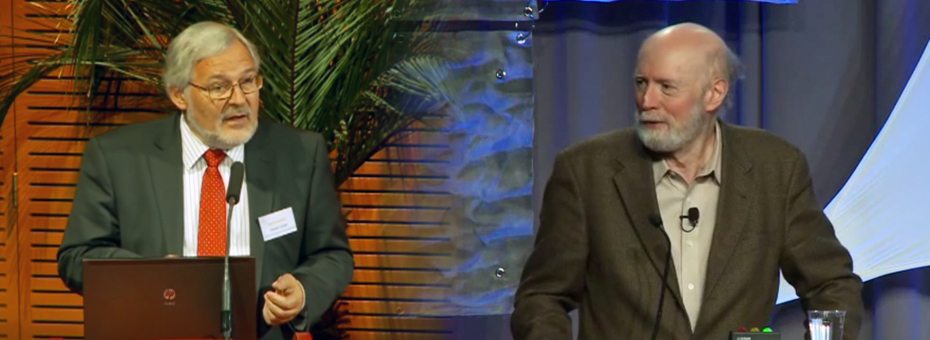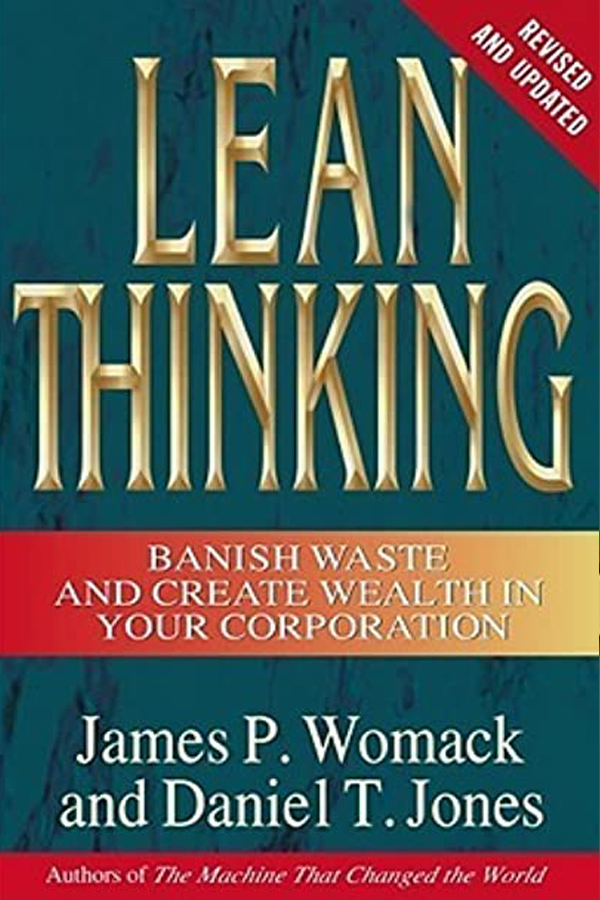Twenty years ago Jim Womack and Dan Jones helped launch the lean movement as we know it today with their key book Lean Thinking. Now, for a second day, we have the opportunity to ask the two authors to reflect on how lean thinking and lean practice have evolved since the book appeared. LEI senior editor Tom Ehrenfeld has asked Jim and Dan for their thoughts on a range of topics; please feel free to add your thoughts, comments, and questions.
Q: How does the continued emergence of the digital economy affect lean thinking and practice?
Dan: Much of the debate has focused on what the start-up and software development activities can learn from lean. My impression is that they are still cherry-picking tools without understanding lean as a learning system. But the other lesson from lean is how to operationalize and scale-up solutions quickly through several product generations, incorporating lessons from both users and the production process. This is a challenge for digital technologies as they increasingly depend on embodiment in physical products.
What also strikes me is that exploiting the real potential of digital technologies demands a change in the way we think about the architecture of information systems and organizations – no more centralized and inflexible SAP-style command and control systems, but a multitude of decentralized applications using common platforms. We still have a lot to learn about how lean works in decentralized networks involving the active participation of users.
Jim: Over time a lot of repetitive, boring work will be eliminated. And even the best lean practices struggle to make extremely simple tasks engaging. So this is a good thing. But…who will think about user experience as apps are written? Watson? And who will help humans navigate their way through the digital economy? The very technologies creating this economy? I’m skeptical.
I still can’t find anyone to help me integrate my personal IT systems and I still can’t find anyone to help me with the big problems that I need solved – mobility, shelter, health, communication, etc. Instead I’m offered more brilliant objects and apps that don’t sync and told to go figure. The problem is me! (Hint to Lean Thinking readers: There is a great sequel called Lean Solutions that tackled these issues before anyone else was ready to consider them!) So there is even more scope for lean thinking in the digital economy once we focus on the right unit of value to improve, which is at the system rather than the point level.
Q: How has your thinking about action plans for adopting lean thinking evolved?
Jim: What has stayed the same is that they start with…action! And an effort to create a lean value stream within a complex organization is still the place to begin. However, twenty years ago it seemed plausible that if one value stream was improved, and then another, and then another, that the eventual result would be a mature lean enterprise. Today it seems more useful to realize that the act of creating one lean value stream as a technical exercise will force to the surface all the disconnects between a new way to create value and the old (current) way of managing value creation. This will lead in particular to the realization that the foundation of sustainable improvement is daily management that can create stability, and that continuous improvement cannot rest on the daily chaos that lies at the base of most organizations. So: start with dramatic action to create a lean value stream. Then reflect on what this teaches about the gap in management. Then address the management gap. Otherwise your organization can do brilliant kaizen forever without actually improving the value provided to the customer, the work experience of the employees or the results for the owners.
Dan: First, lean has to be seen as strategic, and therefore top management has to be convinced about the business case for lean. In our enthusiasm to carry out proof of concept experiments to show how lean works we failed to give this sufficient attention. Second, the purpose of lean is not just improved processes but better products and services for customers and yet we miss a big opportunity if we fail to close the loop from the deeper understanding of the limitations of the current process in designing the next generation product or service. Indeed one of the major benefits of lean is using the freed up capacity to introduce new products with less capital and risk.
Q: What organizations intrigue you today?
Jim: I’m actually interested in systems of value creation. Not individual organizations but eco-systems. Not Tesla or Google or Uber (or General Motors) but the mobility eco-systems that are evolving. These are start-ups at the system level, going beyond the many start-ups at the individual enterprise level and I hope the Lean Community will be deeply engaged.
Dan: Frankly I am disappointed how fast the management systems of the current digital champions have come to resemble traditional functional bureaucracies. Maybe there is no escaping “big company” disease. But I am hoping the next-generation digital organizations will experiment with new team-based structures that facilitate individual and team based learning that leads to fulfilling and meaningful work. Is Kaizen the ultimate antidote to “big company” disease?
Q: What is the message of Lean Thinking to the Lean Community today?
Dan: The only thing that lasts is what you do for yourself. Value streams are built one step at a time by those working in them. Developing capabilities of employees by learning-by-doing is a line management responsibility, not a staff function. All these and more are at variance with traditional consulting – selling hours of junior staff time. So I see little future in this.
Coaching and mentoring are more promising roles. But teaching everyone problem solving is still not enough unless you also teach senior managers how to understand in detail the problems their staff are grappling with how to use TPS to find and frame the direction for problem solving activities. Top managers only listen to those with hands-on experience of having grappled with these issues. So the challenge for many lean folks is how to gain this line management experience.
Jim: I hope it is simply that the life of lean is experiments, not dogma. And experimental findings need to be shared rather than hoarded. That’s a fundamental difference between the traditional consultant mindset – “I have the answer [often based on degrees of separation from Taiichi Ohno!], all you need is to do is do what I say, and no public information on results is needed” – and the true lean mind set – “we are always evolving new hypotheses as reality changes, these can only be verified by experiments by value creators and managers at the gemba, and the results should be shared.” I hope the latter mindset prevails. Perhaps we will know in another twenty years!
Q: What would you call “lean” today?
Jim: The problem is not with “lean.” Any word will do that means creating more value with less waste, and I often tell managers to avoid the use of the word lean if it causes problems. (And I absolutely tell to avoid the dreadful concept of a “lean program” because lean is forever, not for the moment.)
The problem is with “thinking.” That’s passive rather than active and we brought up this point with our editor as we were preparing the book for launch. “How about ‘lean transformation’ or something that conveys the necessity of learning by trying experiments?” To which the editor – looking at sales of the book rather than the effect of the book on managers – said, “People love to think, which has no risk. But they hate to act, which is dangerous. So let’s stick with lean thinking. That title will sell.” And at that time publishing contracts always stated “the publisher retains the right to title the work.” So…we got Lean Thinking.
Dan: The more I think about it the more I think that Lean Thinking was the right title for the book, although I would now add “and Practice.” Practice in both senses of the word; practice as in the many hours learning to play the violin (daily Kaizen) and practice as the way your approach any problem in life. At its heart, lean is a cognitive revolution and not an organizational one. Lean thinking cannot be learnt from abstract thinking alone, but only through repeated, structured practice with “ah-ha” insights as to why common notions are wrong – in other words, “by acting our way to a new way of thinking.” This applies as much to top managers as it does to front-line teams, “you learn by helping others to learn.”








